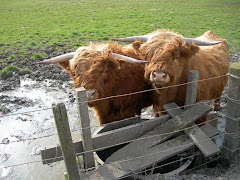This most picturesque of North Yorkshire rivers has its source on the moors above Langstrothdale Chase. Whilst not the longest of rivers nevertheless it encompasses a vast range of scenery and river states, from upland stream to a tidal river close to its confluence with the River Ouse near Cawood.
Langstrothdale is the steep sided upland valley of the River Wharfe. At this point the river has a limestone bed and can vary considerably between being in spate with full flow and being almost dry in the summer months. The valley sides are littered with limestone caves, small waterfalls and of course the drystone walls and sheep so characteristic of upland Yorkshire.
The valley is furnished with a narrow but very serviceable road which for much of its length is unfenced allowing complete access to the greensward which flanks the crystal clear stream. In summer this is a very popular spot for a day with the children, a riverside picnic or just a stop for a quiet cup of tea at the side of the car.
Further down the valley at Hubberholme the fledgling River Wharfe is joined by Cray beck and this marks the start of Upper Wharfedale. Hubberholme is a small hamlet boasting a superb parish church, resting place of J.B. Priestley which also sports hand carved oak pews from Robert Thompson - the mouseman of Kilburn. At this point the character of the river changes, the valley is flatter and the river calmer, deeper and less changeable. The valley has also opened out to form the classic flat bottom glacier formed valley with the low level fields, steep sides, dry stone walls and field barns so typical of the Yorkshire Dales.
Upper Wharefedale also contains a number of wonderful villages, packed with amenities, accommodation and food and drink establishments. A great example is the Buck Inn at Buckden which provides great rooms, superb food, great Yorkshire ale or simply a great cup of Yorkshire tea.
Other equally beautiful and popular villages include Kettlewell, Grassington and Appletreewick.
Towards the southern end of the valley the river enters woods on the estate of the Duke of Devonshire and hidden in these woods is one of the most dramatic features of the river. At The Strid the whole flow of the river is compressed into a deep and rocky channel less than 2 metres wide. The resulting roaring torrent is full of strong downward currents and underwater overhangs to trap and drown the unwary. Over the years there have been many casualties including the medieval Boy of Egremond who was later immortalised in the poem by Wordsworth.
Just downstream the river passes by the glorious remains of Bolton Abbey. With the ruins of the priory, over 80 miles of footpaths, 30,000 acres of beautiful countryside and a plethora of tea shops, pubs and restaurants this is quite simply a great place for a family day out. A gem at the heart of the Yorkshire Dales.
Now the river changes again, the valley broadens out and the river is fuller and more mature. The nature of the riverside settlements also changes, growing bigger and more industrial as the Wharfe moves close to Leeds and Bradford. But first the river passes the village of Addingham famous for its church and the nearby suspension bridge before passing through the first town in it course, i.e. the town of Ilkley. High above the river lie the moors made famous in the Yorkshire song about a man who dies of a head cold from "courting" his girlfriend without a hat.
"On Ilkla moor bar t'at" rings out in many a coach returning from a football match or a trip to the seaside.
Ilkley itself is a grand little town with many fine restaurants and shops and boasts fine fishing for trout from the river. I, myself, have had the pleasure of some great examples provided by Lord Durno who was always keen on fly fishing in the Wharfe. The town was also the birthplace of one of Yorkshire's most popular current personalities, TV presenter, author and gardener Alan Titchmarsh.
Next along the river come Burley in Wharfedale and then the market town of Otley with its old mill buildings and riverside parks. The town is bustling without being overwhelming and you hardly notice the overflying aircraft on their way to or from the nearby Leeds Bradford airport. Locally the town is most well known for the wild uplands known as Otley Chevin.
Now the river returns briefly to the open spaces of a farming valley before passing out of the dale and into the Vale of York, entering the town of Tadcaster. Here at Tadcaster the river has for years provided both transport and raw material for the brewing industry. The town is still home to several major breweries, from the huge John Smith complex to the smaller but still very popular Samuel Smith brewery. The story of these two breweries both originally owned by the Smith family, descendants of the original Samuel Smith - a butcher from Meanwood in Leeds - reads like a historical epic with family fall outs and splits. The two breweries continue to exist side by side although only the Samuel Smith brewery remains independent.
Below Tadcaster the river flows through several more settlements, some with very nordic names like Ulleskelf or Ozendyke. Around this area the river also becomes tidal with the twice daily rise and fall of the waters flowing from or back into the much larger River Ouse which has flowed down from York.
The river Wharfe finally joins the Ouse just above the urban village of Cawood - famous locally for its swing bridge which seems to break down with depressing regularity. Cawood is also famous as the place where Cardinal Wolsey was arrested by the Earl of Northumberland and taken south to stand trial for treason against Henry VIII. He was, however, never to reach London; falling ill at Leicester and eventually dying of his illness.
The waters of the River Wharfe now mingle with those of the Ouse and continue south east to become the Humber Estuary below Selby and finally to flow into the North Sea east of Kingston upon Hull.
The vast majority of the course of the Wharfe can be followed on foot, the whole walk taking 6 -7 days and accommodation along the way can be found at Yorkshire Accommodation [http://www.best-yorkshire-accommodation.co.uk].
Steve Allanson is a freelance web designer, management consultant, photographer and author.
More details of Yorkshire delights and Yorkshire accommodation can be found at his website Yorkshire Accommodation [http://www.best-yorkshire-accommodation.co.uk]
Article Source: http://EzineArticles.com/?expert=Steve_Allanson
Tuesday, 25 May 2010
Subscribe to:
Post Comments (Atom)









No comments:
Post a Comment